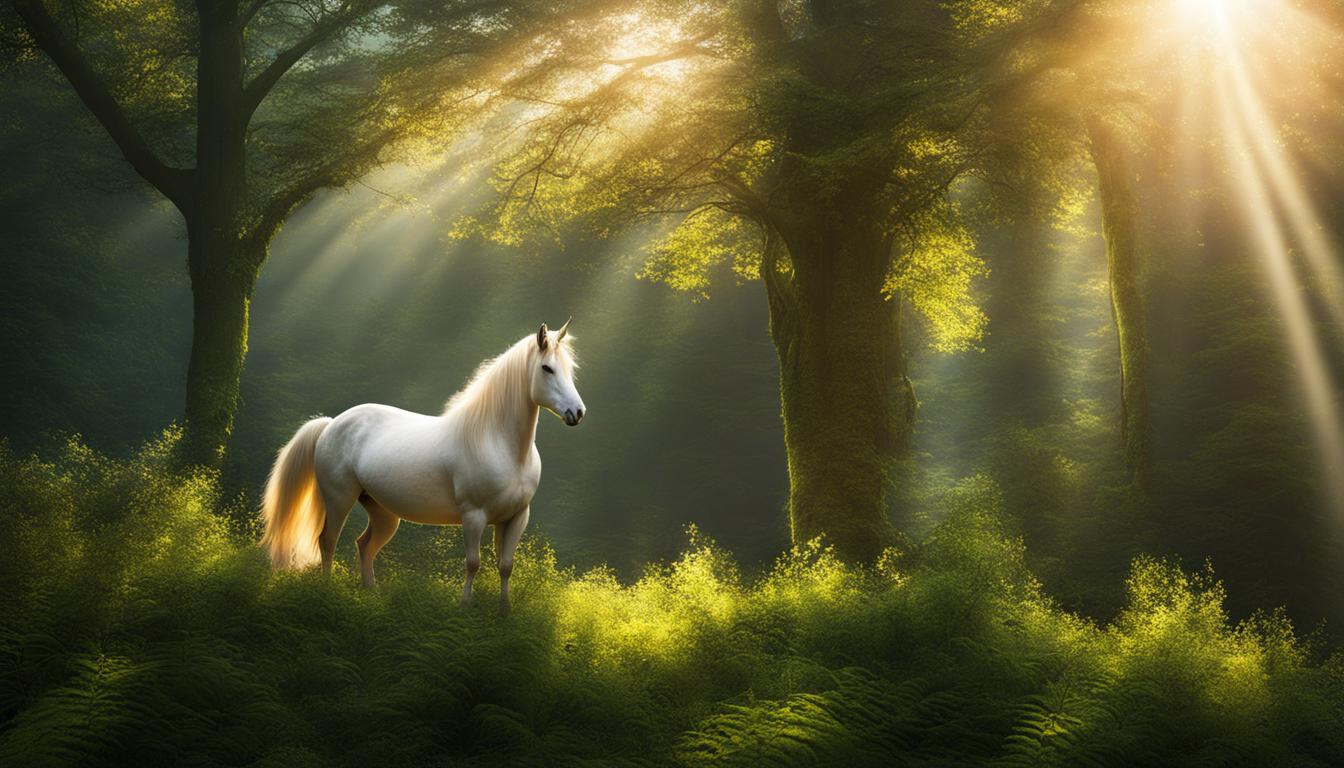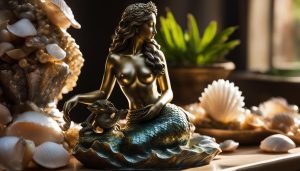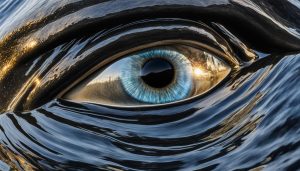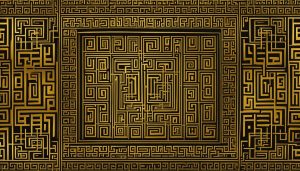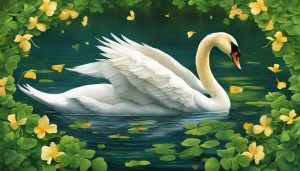Unicorns have long been a source of fascination and wonder, captivating the imaginations of people throughout history. These mythical creatures, along with mermaids and dragons, have left an indelible mark on folklore and legends across cultures. From ancient Greek physician Ctesias’ descriptions of unicorns as wild asses with a horn on their forehead to their depictions in art and literature, unicorns continue to evoke a sense of enchantment and magic.
Unicorns are often associated with positive symbolism, representing purity and good luck. The belief in these magical beings has persisted for centuries, with notable figures such as Aristotle, Julius Caesar, and Marco Polo discussing their existence. While unicorns are now widely regarded as mythical creatures, they continue to inspire mystery and fantasy in popular culture, captivating both young and old alike.
Contents
- 1 The Symbolism and Power of Unicorns
- 2 The Historical and Cultural Significance of Unicorns
- 3 The Legend of the Unicorn Horn
- 4 Variations of Unicorns: From Mythical Beings to Pop Culture Icons
- 5 Unicorns and their Rainbow Connection
- 6 The Unicorn’s Symbolic Presence in Scotland
- 7 Conclusion
- 8 FAQ
- 8.1 Are unicorns real creatures?
- 8.2 What do unicorns symbolize?
- 8.3 Do unicorns have magical powers?
- 8.4 What is the historical significance of unicorns?
- 8.5 Do unicorn horns have healing properties?
- 8.6 How have unicorns been depicted throughout history?
- 8.7 What is the significance of rainbow unicorns?
- 8.8 Why are unicorns important in Scottish culture?
- 9 Source Links
Key Takeaways:
- Unicorns have captivated the imaginations of people throughout history, alongside other mythical creatures like mermaids and dragons.
- The earliest reports of unicorns date back to the fourth century, with Greek physician Ctesias describing them as wild asses with a horn on their forehead.
- Unicorns are often associated with positive symbolism, such as purity and good luck.
- The belief in unicorns has persisted for centuries, with many considering them to be real creatures.
- Unicorns continue to inspire mystery and fantasy in popular culture, captivating audiences of all ages.
The Symbolism and Power of Unicorns
Unicorns have long been freighted with symbolism and are often depicted as elegant and majestic creatures. They hold a special place in mythologies and folklore, representing a range of positive omens and qualities. One of the most prevalent symbols associated with unicorns is purity. Their white color is often seen as a representation of innocence and untainted beauty. This symbolism has been ingrained in various belief systems and cultures throughout history.
Furthermore, unicorns are believed to possess magical powers. In many legends and tales, they are said to hold the ability to purify rivers and neutralize poison. Their horns, in particular, have been revered for their supposed healing properties. Unicorns are often regarded as elusive and powerful creatures, only revealing their vulnerability in the presence of a virginal maiden. This combination of power and purity has made them captivating figures in literature, art, and the collective imagination.
Unicorns are associated with grace, beauty, innocence, and magical abilities. Their symbolism has been recognized in various belief systems and cultures throughout history.
The symbolism of unicorns extends beyond their physical characteristics. They are often seen as a representation of strength, courage, and the pursuit of ideals. Unicorns have appeared on coat of arms, crests, and royal insignias, symbolizing the power and authority of those who bear their image. Their mythical presence in heraldry speaks to their historical and cultural significance, representing the unity and strength of nations.
| Symbolism | Meaning |
|---|---|
| Purity | Representing innocence and untainted beauty |
| Magical Powers | Believed to possess the ability to purify and heal |
| Strength and Courage | Symbolizing power, authority, and the pursuit of ideals |
The symbolism and power of unicorns have endured the test of time, captivating the imagination and inspiring awe. They continue to be celebrated in popular culture, connecting us to the enchanting realm of myths and legends.
The Historical and Cultural Significance of Unicorns
Unicorns have a fascinating history that spans across ancient civilizations. They have been depicted in various forms of art and literature, showcasing their enduring appeal and cultural significance. From the earliest known depictions in the Indus Valley Civilization to their prominence in Greek, Roman, and Persian mythology, unicorns have left an indelible mark on human imagination.
In the Middle Ages, the symbolism surrounding unicorns evolved, and they became associated with concepts such as purity, chastity, and the ideals of knighthood. Artists and writers often portrayed unicorns as elusive creatures, representing the pursuit of noble virtues. Their depictions in coat of arms and crests further solidified their cultural significance, symbolizing strength, courage, and power.
One notable example of the unicorn’s cultural significance is its presence in Scottish heraldry. The unicorn is prominently featured in Scotland’s coat of arms, representing the unity and strength of the nation. Bound by a golden chain, the unicorn reflects the power of the Scottish king who could tame such a formidable creature. This symbolic representation highlights the historical significance and pride associated with the unicorn in Scottish culture.
| Country | Coat of Arms | Symbolism |
|---|---|---|
| Scotland |  |
Unity, strength, power of the king |
| United Kingdom | 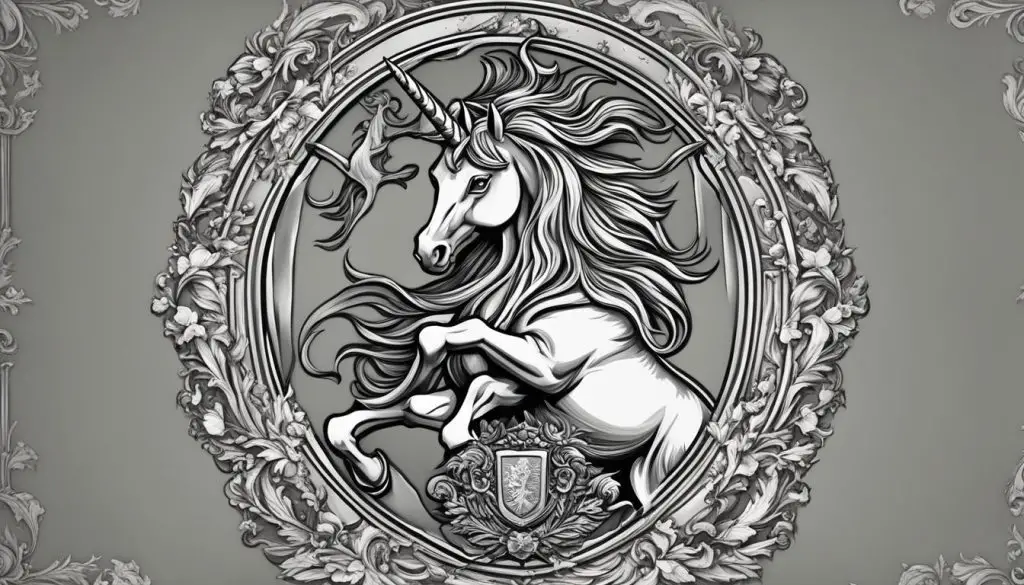 |
Monarchy, power |
The unicorn holds a special place in Scottish heraldry, symbolizing the unity and strength of the nation.
The Rich Legacy of Unicorns in Art and Literature
Unicorns have left an indelible mark on the world of art and literature. Their graceful and mystical nature has inspired countless artists and writers throughout history. From ancient tapestries and illuminated manuscripts to contemporary novels and films, unicorns continue to captivate the imagination of audiences.
- In art, unicorns have been depicted in a variety of styles, showcasing their physical beauty and enchanting presence. They have been portrayed in paintings, sculptures, and even jewelry, ensuring their timeless appeal.
- Literature has played a crucial role in shaping the unicorn’s cultural significance. It has been featured in epic poems, fairy tales, and fantasy novels, adding depth and richness to their mythical allure.
“The enchanting myths and symbolism surrounding unicorns have captivated people throughout history.”
The Lasting Impact: Unicorns in Modern Culture
Unicorns continue to hold a special place in modern culture, captivating audiences of all ages. They are often associated with joy, magic, and whimsy, making them a popular subject in various forms of media and merchandise.
- In animated films and children’s books, unicorns are often portrayed as colorful and friendly creatures, inspiring a sense of wonder and imagination.
- The popularity of unicorns has extended to fashion and design, with unicorn-themed clothing, accessories, and home decor becoming trendy and sought after.
- Social media platforms are filled with unicorn-inspired recipes, crafts, and DIY projects, showcasing the widespread fascination and creative potential of these mythical beings.
The enduring appeal of unicorns in modern culture is a testament to their timeless charm and the lasting impact they have had on human imagination.
The Legend of the Unicorn Horn
Unicorns have long been associated with magical properties, and their horns, known as alicorns, have been the subject of many legends and folklore. The belief in the healing powers of the unicorn horn dates back centuries, with stories suggesting that it possessed the ability to cure ailments and bring good fortune. The demand for unicorn horns was so high that it led to the trade of other animal horns, such as rhinoceros horns and narwhal tusks, as substitutes. However, scientific evidence does not support the notion that unicorn horns possess any magical properties or healing abilities.
“The belief in the magical properties of the unicorn horn is rooted in ancient folklore and mythology. Many cultures believed that the touch of a unicorn’s horn could heal both physical and spiritual ailments.” – Folklore Expert
The legend of the unicorn horn’s magical properties has been perpetuated through literature and fairy tales, where it is often depicted as an essential ingredient in potions and used as a tool for casting spells. In popular culture, the unicorn horn continues to be a symbol of enchantment and wonder, captivating the imaginations of both children and adults alike.
| Mythical Properties | Scientific Reality |
|---|---|
| Healing powers | No scientific evidence to support this claim |
| Good fortune | Superstition and folklore |
| Magical abilities | Fictional concept |
Despite the lack of scientific evidence, the legend of the unicorn horn persists, serving as a reminder of the enduring fascination humans have with mythical creatures and their extraordinary powers. Whether real or not, the unicorn horn remains a symbol of magic and wonder in our collective imagination.
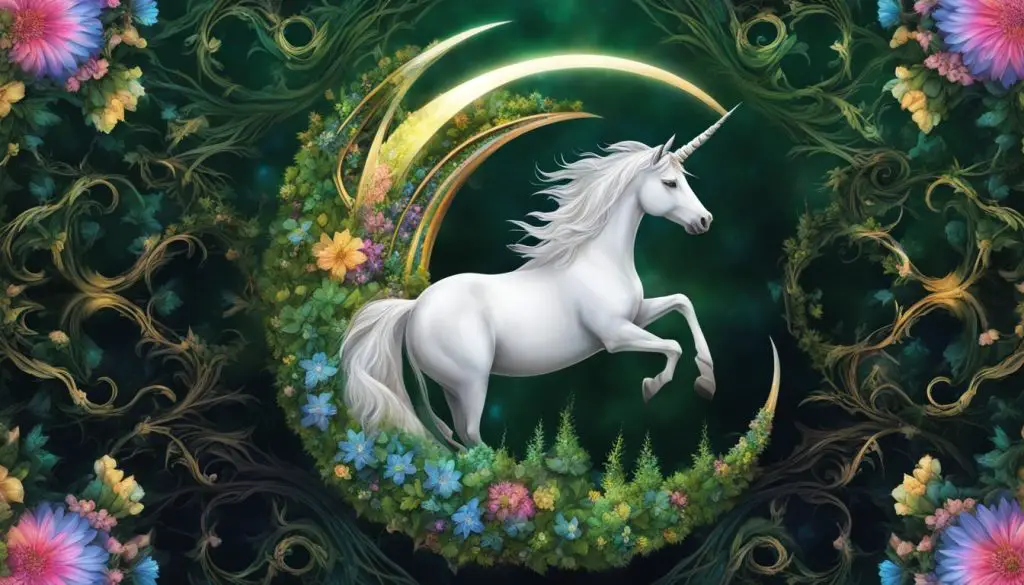
Interesting Facts about the Unicorn Horn:
- The belief in the healing properties of unicorn horns was prevalent in ancient China, where they were used in traditional medicine.
- Unicorn horns were highly sought after during the Renaissance, leading to the creation of intricate and elaborate replicas made of ivory and precious metals.
- Medieval bestiaries often described the unicorn horn as having the ability to detect and neutralize poisons, making it a valuable tool for royalty and nobility.
Variations of Unicorns: From Mythical Beings to Pop Culture Icons
Unicorns have been depicted in various ways throughout history, encompassing a wide range of physical characteristics that vary across different cultures and time periods. While the popular image of a unicorn often portrays it as a white horse with a single horn, the legends and myths surrounding these enchanting creatures offer diverse and fascinating variations. Some depictions include wings, a goat’s beard, or a lion’s tail, showcasing the creativity and imagination of different cultures in interpreting and representing unicorns.
These variations in physical characteristics highlight the mythical nature and enduring appeal of unicorns. Described as gentle and graceful creatures, unicorns are often depicted with long and slender bodies, flowing manes and tails, and wise eyes that seem to carry the weight of ancient wisdom. They are renowned for their beauty and mystical aura, making them captivating subjects in myths and legends that have been passed down through generations.
The enduring fascination with unicorns has extended beyond ancient lore and into the realm of popular culture. These magnificent creatures continue to inspire and captivate audiences of all ages through literature, art, and media. From children’s books to fantasy novels, unicorn-themed merchandise to movies and TV shows, unicorns have become iconic symbols of magic, wonder, and escapism. Their representation in popular culture serves as a testament to their enduring popularity and their ability to ignite our imaginations with their ethereal presence.
| Variations of Unicorns | Physical Characteristics | Myths and Legends | Unicorn in Popular Culture |
|---|---|---|---|
| White horse with a single horn | Graceful and slender bodies | Associated with purity and magic | Inspire magic and wonder in literature, art, and media |
| Wings, goat’s beard, or lion’s tail | Flowing manes and tails | Symbolize strength and mystical powers | Captivating subjects in movies and TV shows |
| Various color variations | Wise eyes | Widely featured in myths and legends | Iconic symbols of magic and escapism |
Unicorns and their Rainbow Connection
Rainbow unicorns have become a popular and vibrant depiction of these magical creatures in recent years. The use of rainbow colors represents joy, positivity, and creativity. The association between unicorns and rainbows is rooted in their shared symbolism of beauty and happiness. It is no wonder that the sight of a rainbow unicorn brings a smile to your face and fills your heart with delight.
“Rainbow unicorns remind us to embrace the beauty of diversity and to celebrate our differences. They symbolize the inclusivity and acceptance that the LGBTQ+ community stands for,” says Dr. Emily Hart, a professor of Mythical Studies at Enchant University.
In the ever-evolving world of popular culture, unicorns have taken on a symbolic role within the LGBTQ+ community. They serve as a celebration of diversity and a reminder to embrace and appreciate the uniqueness of individuals. The unicorn’s connection to both masculinity and femininity makes it a fitting symbol for people across the gender spectrum.
The Symbolism of Rainbow Unicorns
Rainbow unicorns symbolize joy, positivity, and the power to create your own path. Their vibrant colors represent the beauty and diversity of life, reminding us to embrace our true selves and celebrate our individuality. The colorful mane and tail of a rainbow unicorn serve as a visual reminder that we should let our uniqueness shine brightly for all to see.
Just as a rainbow arches across the sky after a storm, a rainbow unicorn brings hope and optimism into our lives. They serve as a reminder that no matter how dark and challenging times may be, there is always light and beauty waiting to emerge.
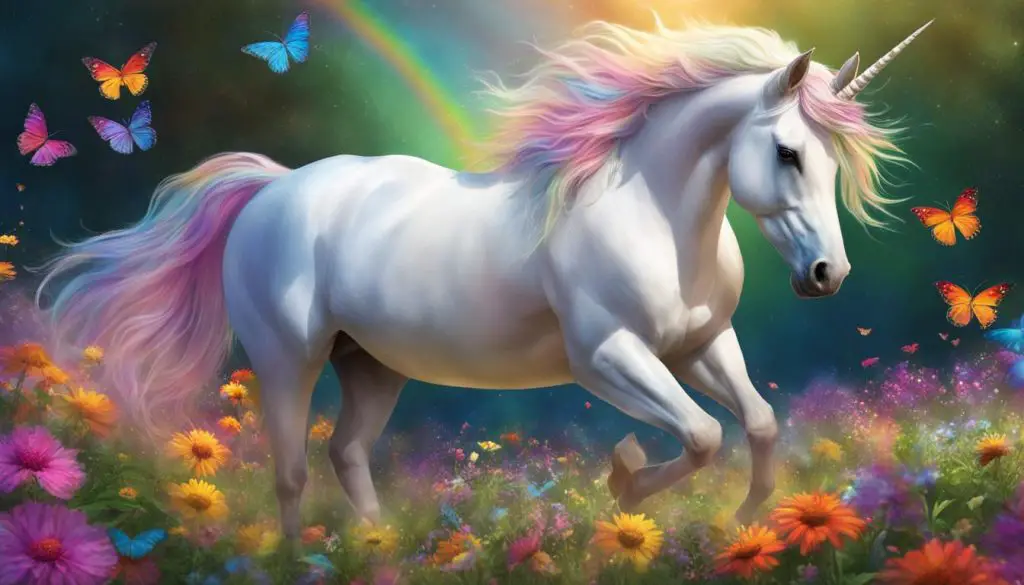
| Symbolism | Meaning |
|---|---|
| Joy | The presence of a rainbow unicorn brings happiness and delight. |
| Positivity | Rainbow unicorns radiate positive energy and inspire optimism. |
| Creativity | The vibrant colors of a rainbow unicorn represent the power to imagine and create. |
| Diversity | They symbolize the beauty of embracing differences and celebrating individuality. |
| Inclusivity | Rainbow unicorns stand as a symbol of acceptance and the celebration of diversity. |
So, the next time you catch a glimpse of a rainbow unicorn, take a moment to embrace the joy, positivity, and diversity it represents. Let it serve as a reminder to find beauty in the world around you and to celebrate the unique and wonderful person you are.
The Unicorn’s Symbolic Presence in Scotland
Scotland holds a unique and cherished connection to the unicorn, making it a symbol of strength, unity, and power within its heraldry. The unicorn has been a part of Scotland’s history for centuries, and its presence can be seen in the country’s coat of arms. The depiction of the unicorn in Scottish heraldry often shows the majestic creature being bound by a golden chain, which serves as a representation of the king’s ability to tame and control such a formidable being. This symbolism showcases the historical significance and pride associated with the unicorn in Scottish culture.
The unicorn’s presence in Scottish heraldry carries great significance. It represents the unity of the nation, bringing together different clans and regions under one symbol. The unicorn’s strength and untamed nature symbolize Scotland’s resilience and determination to protect its sovereignty. The usage of the unicorn in the country’s coat of arms highlights the power and authority of the Scottish king, who was believed to possess the ability to harness the strength and loyalty of such a mythical creature.
“The unicorn is a symbol of strength, unity, and power in Scottish heraldry. Its depiction in the coat of arms represents the king’s control over this magnificent creature.” – Scottish Historian
The symbolic presence of the unicorn in Scotland resonates with the country’s history and culture. Its inclusion in Scottish heraldry is a reminder of the nation’s proud heritage and the unity that has shaped its identity. The unicorn serves as a powerful symbol, embodying the ideals of strength, unity, and the authority of the king. This enduring representation has cemented the unicorn’s place in Scottish culture, captivating both locals and visitors alike with its mythical allure.
| Symbolism | Strength | Unity | Power of the King |
|---|---|---|---|
| Representation | An embodiment of Scotland’s resilience and determination | A symbol of the nation’s unity and collective identity | Depicts the king’s authority and control over a mighty creature |
| Significance | Highlights the strength and fortitude of the Scottish people | Serves as a reminder of the cohesive spirit of the nation | Establishes the king’s power and ability to govern |
| Meaning | Reflects Scotland’s resilience in the face of adversity | Represents the coming together of diverse clans and regions | Symbolizes the king’s authority and ability to command loyalty |
Conclusion
Unicorns have long been a source of fascination in the popular imagination. Despite their mythical nature, they continue to captivate people of all ages with their enchanting myths and symbolism. The enduring appeal of unicorns lies in their representation of purity, magic, and positivity, evoking hope, joy, and a touch of whimsy.
Throughout history, unicorns have inspired countless works of art, literature, and popular culture. Their timeless charm is evident in their ever-evolving depictions, from ancient civilizations to modern-day interpretations. Unicorns hold a special place in our collective consciousness, as symbols of beauty, grace, and mystical wonder.
Whether seen as a sign of good luck or simply as enchanting beings, unicorns continue to weave their spell, leaving us forever enchanted. The unicorns in our imagination may not exist in reality, but their presence in our hearts and minds is everlasting. Their symbolic power and everlasting fascination are a testament to the enduring magic of these mythical creatures.
FAQ
Are unicorns real creatures?
No, unicorns are widely regarded as mythical beings.
What do unicorns symbolize?
Unicorns are often associated with positive qualities such as purity, grace, and good luck.
Do unicorns have magical powers?
In various belief systems and folklore, unicorns are believed to possess magical powers, such as purifying rivers and neutralizing poison.
What is the historical significance of unicorns?
Unicorns have a rich history dating back to ancient civilizations and have been depicted in art and literature as symbols of purity and knighthood.
Do unicorn horns have healing properties?
Unicorn horns, also known as alicorns, were believed to have healing powers, although scientific evidence does not support this claim.
How have unicorns been depicted throughout history?
Unicorns have been depicted in various ways, including as white horses with a single horn, sometimes with wings, a goat’s beard, or a lion’s tail.
What is the significance of rainbow unicorns?
Rainbow unicorns have gained popularity in pop culture, representing joy, positivity, and creativity.
Why are unicorns important in Scottish culture?
Unicorns hold a special place in Scottish heraldry, symbolizing the unity and strength of the nation in the coat of arms.

